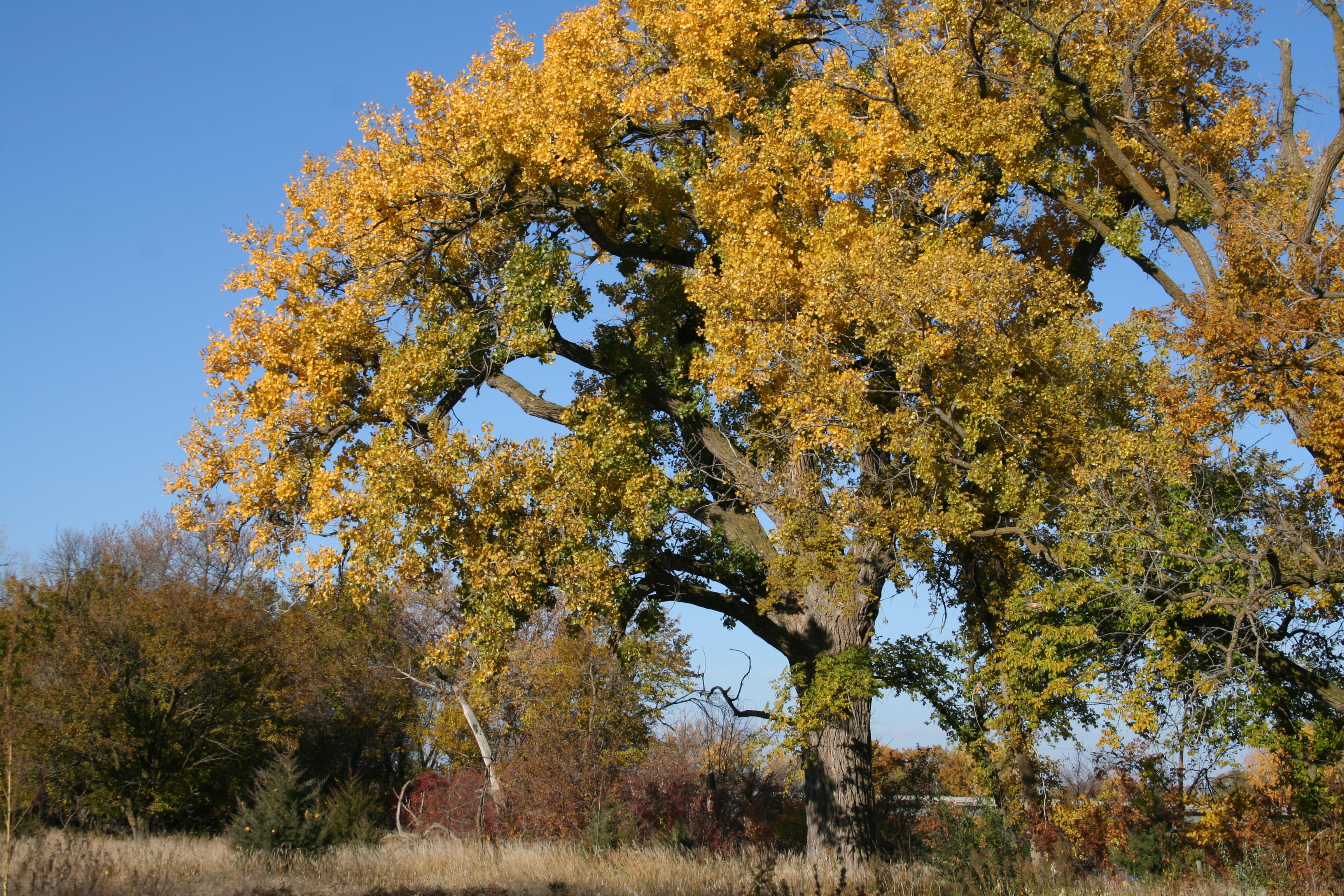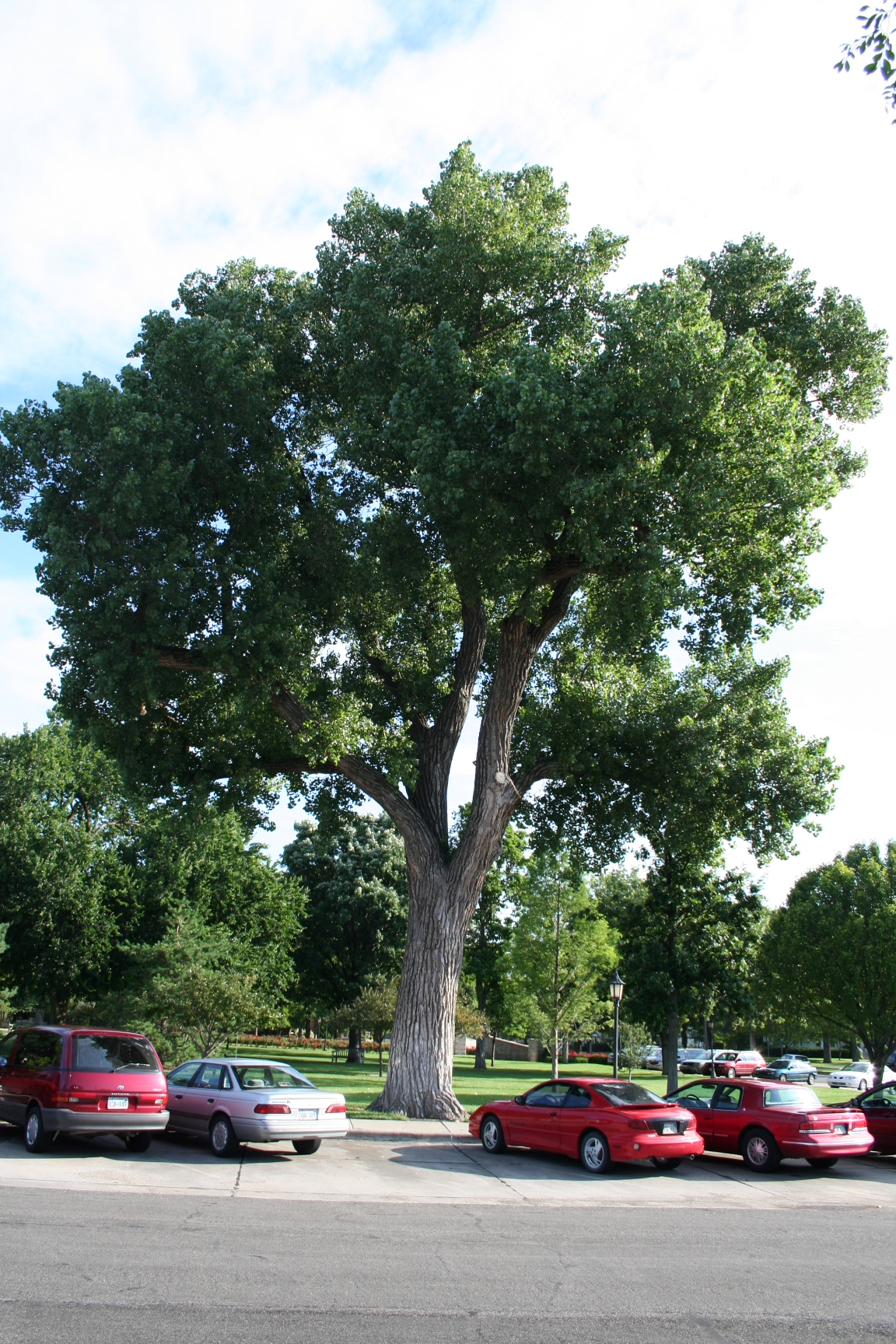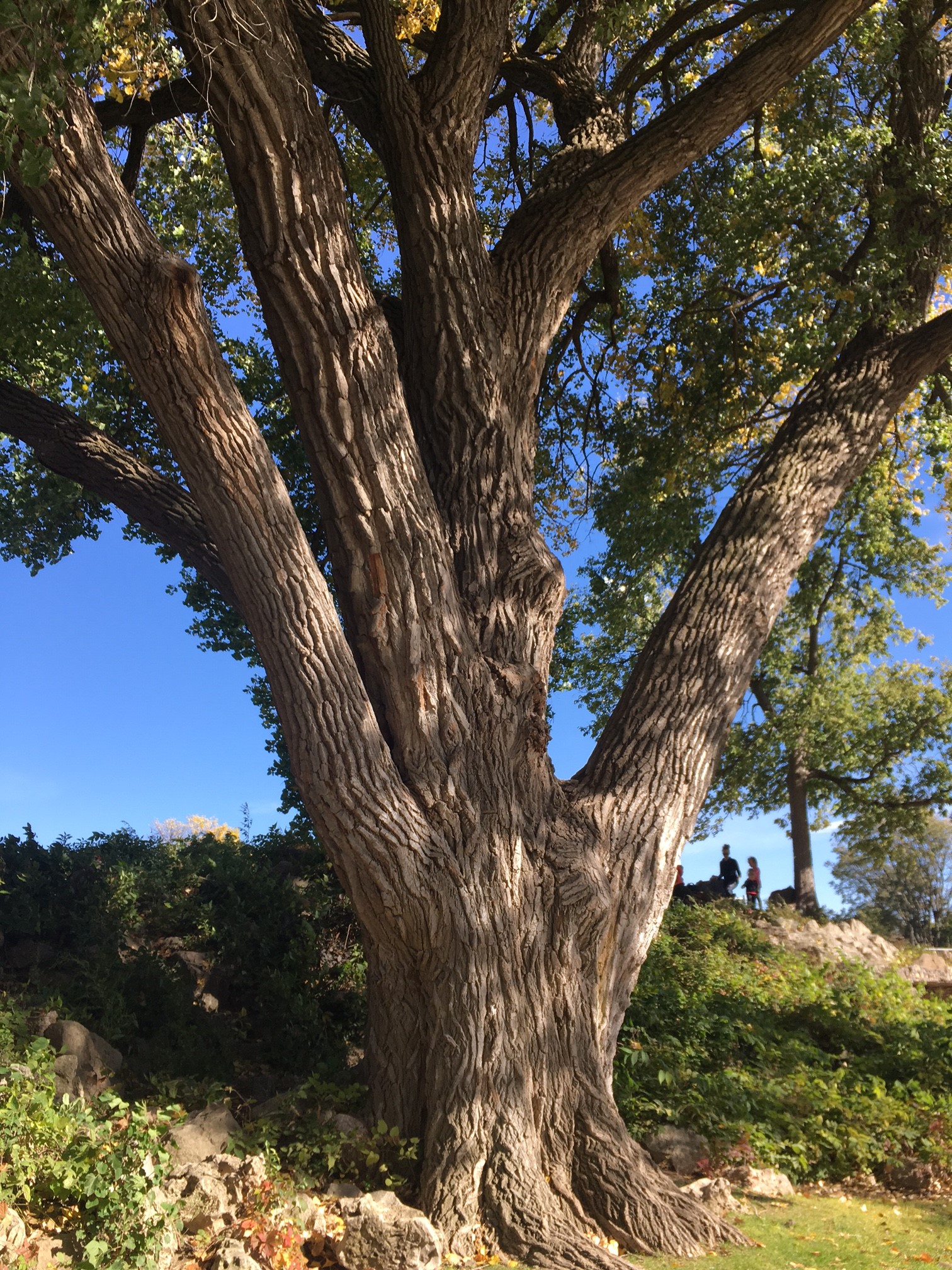Cottonwood, Eastern
Populus deltoides, Deciduous
Most people can relate nostalgically to large cottonwoods that shaded favorite camping or fishing spots, that whispered their rustling leaves in the slightest breeze, and which released their cottony seeds like a snow squall on late spring days.

Where To Grow

Size at Maturity
| Tree Height | Tree Spread |
| 70-100' | 60-90' |
Tree Characteristics
The cottonwood is a fast grower, is resilient to temperature extremes, offers wide-spreading shade and, can have a nice golden-yellow fall color. It is a relatively short-lived tree, seldom surviving for more than 80 years.
The leaves are broadly triangular, ovate in outline, 3 to 5 inches long and nearly as wide. They are dark green, lustrous above, and paler and smooth beneath. The marginal teeth are somewhat hooked, being larger toward the leaf base and smaller toward the pointed tip. Twigs are rather stout, round, and distinctly enlarged at the nodes. The conical, pointed buds are smooth, glossy, and olive-brown to reddish-brown in color. The bark of younger trees is rather smooth and greenish-gray. On older trunks, it becomes ashy-gray and is roughened by long, deep, longitudinal and interconnecting furrows.
Wildlife Benefits
Seedlings and young trees are browsed by rabbits, deer, and domestic stock. Beavers use saplings and poles for food and dam construction. It is also vitally important to many important bird and insect species.
Additional Considerations
Though many seedless cultivars of the tree exist, few offer enough positive attributes to recommend them for planting. Instead, the best trees for planting are those that are grown from native seed or that occur naturally nearby. Just dig up a seedling or start one from a cutting in late winter.
Interesting Facts
Native Americans held cottonwood in high regard and it is thought that the leaves, fashioned into teepees by native children, were the inspiration for the teepee dwellings of the plains tribes. Our state's Champion cottonwood is also the National Champion. It's near Beatrice!
References
- Tips for planting success
- NRCS Plant Guide
- Developed by Justin Evertson, Kyle Martens, and Denise Wally

